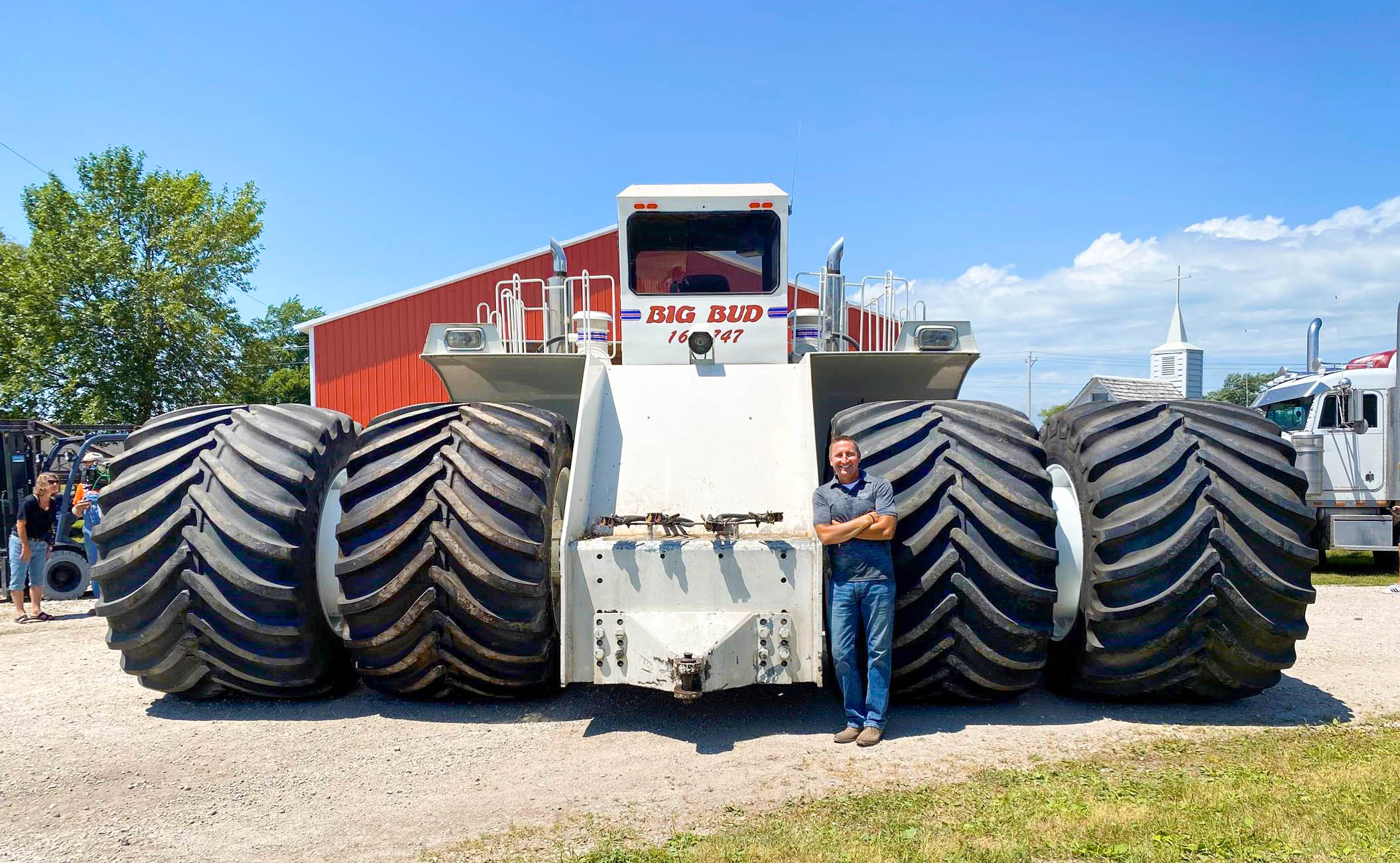
(Photo: Titan International, Inc.)
Shop Talk with Scott Sloan of Titan International
November 29, 2022 | Aaron Putze, APR
Farmers have a lot riding on a good set of tires. Proper inflation, impaction and maintenance directly impact soybean production and a farmer’s bottom line.
While traversing the Farm Progress Show grounds near Boone in August, I bumped into Scott Sloan of Titan International Inc. Sloan is one of the best tire guys in the biz and a frequent guest of Bob Quinn and Andy Petersen on WHO Radio’s The Big Show. We talked tires – from inflation and slip percentages to knowing and balancing load weights – and why all these things matter. Here’s an excerpt of our conversation.
Why should farmers care about tires?
You can have the best motor, transmission and cabin amenities, but you won’t go anywhere without a good set of tires. Real performance depends on transmitting horsepower to the ground and doing it efficiently. Having the right tires and footprint are essential.
What is the science behind proper tire inflation?
Too much or too little air in a tire costs you money. When it comes to inflation, don’t go by the pounds per square inch (psi) marked on the sidewall or how the tire looks. If you do, you’ll lose out on the benefits from running on properly inflated tires. Start with knowing the weight of your load, then inflate based on that data. Doing so will have a positive and cumulative effect on compaction, pull, traction and fuel economy, which will impact your bottom line.
Conventional wisdom contradicts running on underinflated tires. Yet, you’re a proponent?
Yes, I am. Flattening a tire enlarges the footprint that’s carrying that load. A larger footprint translates to more distribution on the ground, which reduces the psi. A bigger footprint lessens impaction and that’s good for plant germination and growth. On-board central inflation systems are coming into vogue. Keep an eye on them so you can adjust inflation accordingly if you’re in the field or on the road.
What other benefits come from a lower inflation?
It improves traction by reducing slip percentage. When you’re slipping, you’re losing traction and thus, distance and fuel efficiency. You want the distance you travel to be equivalent to the revolution of your tires.
What else affects performance?
Ensure weights on the implement are balanced. When you’re not getting the traction you need, take a second look at the balance of front-to-rear weight ratios. For four-wheel articulated 90-series implements, we try to get 60% of the total weight of the tractor on the front axle as keeping the front down pulls the rear down and reduces slippage. On the mechanical front drive tractor, it’s the opposite, as you want 40% on the front and 60% on the rear.
What was a game changer for the tire industry?
Low Sidewall Technology (LSW). It was a privilege to help build the first LSW tire in 1997. Titan Tire took the lead in looking differently at a tire in terms of a larger rim diameter and smaller sidewall. It took a bit of nerve, but we were relentless in our efforts to build a better tire. The work paid off – for Titan and farmers. The LSW tire significantly reduces power hop, road lope and soil compaction, which improves equipment safety, performance and efficiency.
Does it appear LSW is here to stay?
Seeing LSW become the gold standard in the farm tractor tire industry has been rewarding. We improved stability and handling by taking out 20% of the sidewall — thus shortening it — and boosted performance.
You’ve been involved in the tire industry for almost four decades. Why?
I love what I do. I also respect the work ethic of farmers and what they do. Input costs are crazy, and the amount of money a farmer handles annually is scary. Farmers want to see value in everything they do, and we want to deliver value. A $500,000 machine might look cool, but if a $250,000 machine can achieve the same outcome and we can make that happen with the right kind of tires, most farmers will choose the $250,000 tractor.
Back